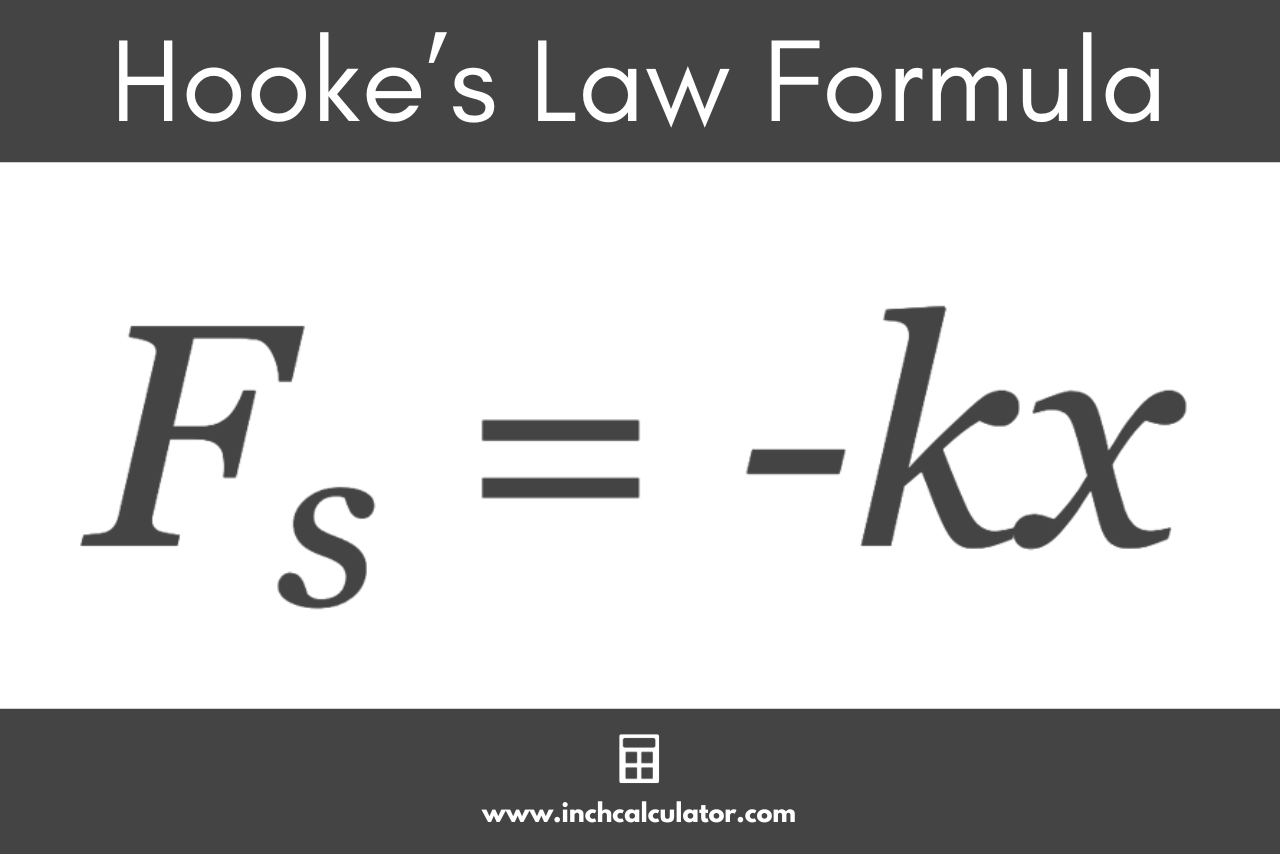Spring Constant Calculator
Use our spring constant calculator to find the spring force, the spring constant, or its displacement using Hooke’s Law.
Spring Force:
Spring Force Formula
Spring Constant Formula
Spring Displacement Formula
On this page:
How to Calculate Spring Force Using Hooke’s Law
Hooke’s Law relates the force exerted by a spring to the displacement caused by that force. This relationship is key to designing and understanding how springs function in various mechanical and structural systems.
Hooke’s Law states that the force exerted by a spring is directly proportional to the distance to which it is compressed or stretched (its displacement).
What is Spring Force?
Spring force, denoted Fs, is the force exerted by a spring when it is compressed or stretched. This force is always directed towards returning the spring to its equilibrium or original state.
It is a reactive force that increases in strength as the spring is further deformed, either by stretching or compressing.
What is the Spring Constant?
The spring constant, often denoted by k, is a measure of the stiffness of a spring. It quantifies the amount of force required to stretch or compress the spring by a unit of length.
A higher spring constant indicates a stiffer spring that requires more force to deform. The spring constant is unique to each spring and is determined by factors such as the material of the spring and its dimensions.
What is Spring Displacement?
Spring displacement, denoted as x, is the measure of how much a spring has been stretched or compressed from its original length. It can be a positive or negative value depending on the direction of the displacement relative to the equilibrium position.
Hooke’s Law Formula
Hooke’s Law states:
Fs = -kx
Where:
Fs = spring force
k = spring constant
x = spring displacement
Thus, the spring force Fs is equal to -1 times the spring constant k times the spring displacement x.
The negative sign indicates that the force exerted by the spring is in the opposite direction of the displacement, acting to restore the spring to its original length.

Formula to Find Spring Constant
k = –Fs / x
The spring constant k is equal to the spring force Fs divided by the spring displacement x times -1.
Formula to Find Spring Displacement
x = –Fs / k
The spring displacement x is equal to the spring force Fs divided by the spring constant k times -1.
For example, suppose we have a spring with a spring constant of 300 N/m. Let’s calculate the force exerted by the spring if it is stretched by 0.5 meters.
Fs = -300 N/m × 0.5 m
Fs = -150 N
So, the spring force is 150 Newtons directed towards the equilibrium position, opposing the direction of displacement.

